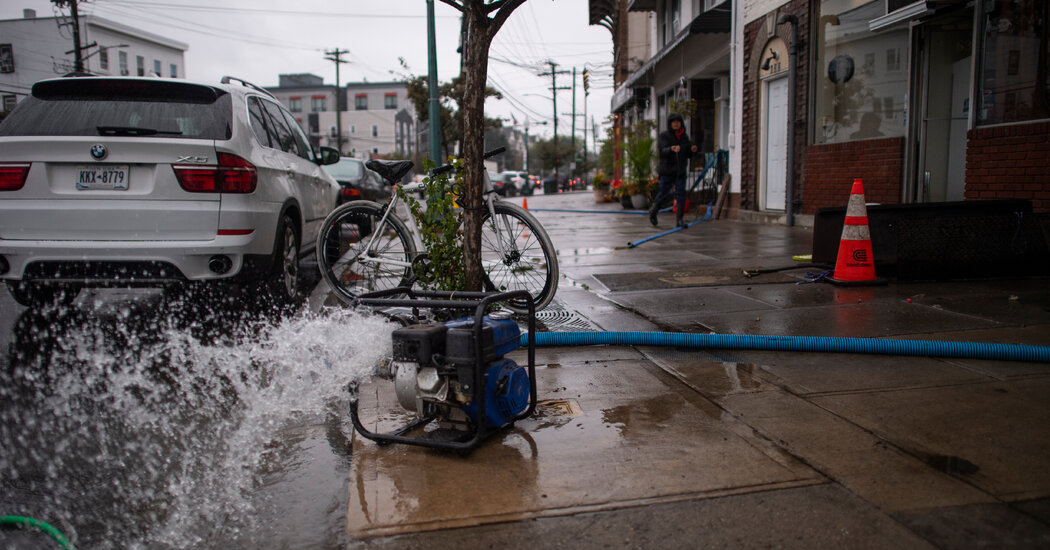After record-breaking rains swamped the subway, grounded flights and flooded streets in New York City and the surrounding region on Friday, New Yorkers resumed their routines the next morning. Rain showers continued on Saturday, putting some areas at risk of further flooding, but they were expected to taper off by the evening.
On Saturday morning, the New York City metropolitan area was no longer under a flood watch, the alert that indicates that flooding is possible, according to the National Weather Service. A flood watch remained in effect until Sunday afternoon around New Haven, Conn.
At a news conference on Saturday morning, Gov. Kathy Hochul thanked New Yorkers for heeding official warnings. There were no storm-related fatalities, she said, adding that emergency teams had made 28 rescues from “raging waters” in the Hudson Valley and Long Island.
“I want to emphasize how serious this event was,” the governor said, adding that climate change was making such storms “a new normal.”
As of 9:30 p.m. Friday, rainfall in parts of Nassau County on Long Island had reached slightly above nine inches, while the area near Kennedy International Airport it hit 8.6 inches — the most recorded in a single day, according to the Weather Service.
The downpour shut down half of the city’s subway lines on Friday and suspended service on the Metro-North Railroad traveling in and out of the Grand Central Terminal. Service on the Long Island Rail Road was also significantly affected. Flights were delayed or canceled at the city’s airports, with travelers evacuated from one La Guardia terminal as floodwaters rose.
Ms. Hochul and Janno Lieber, the Metropolitan Transportation Authority chief, emphasized the need to improve city infrastructure to handle increasingly frequent and severe storms.
“We keep talking about the fact that the system was designed long ago for a rainfall at the rate of 1.75 inches per hour, and we are consistently getting more than that, so we need additional outflow,” Mr. Lieber said at the news conference.
The subway was up and running as of Saturday morning, though some Metro-North branches were still experiencing weather-related delays, according to the M.T.A. The L.I.R.R. and airports had resumed regular service.
The thoroughfares that had been closed as the storm swept through the city, like Franklin D. Roosevelt Drive and the Belt Parkway, had reopened by Saturday morning.
The rainfall on Friday made this the second-wettest September in New York City history, according to Weather Service statistics. More than 14 inches has fallen this month, the most since September 1882, when the city logged 16.85 inches.
A combination of factors, including heavy rain showers that grew as they slowly moved through the metropolitan area, provided the right environment for flash floods, said John Murray, a meteorologist at the National Weather Service.
Mr. Murray said that rain showers were expected to linger in the region until Saturday evening, but that they would be “nowhere to the level of the intensity we saw yesterday.”
Andy Newman contributed reporting.











